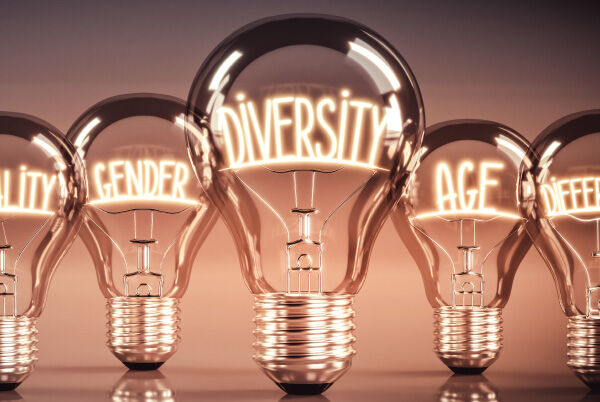Bias
Toward Understanding Bias, Prejudice, and Violence
The impact of early development and affect, cognition, and language
Posted January 3, 2022 Reviewed by Hara Estroff Marano
Key points
- Bias, prejudice, and violence have rarely been examined from the perspectives of early development, affect, cognition, and language.
- Are groups such as KKK, Nazi's, ISIS, and Proud Boys similar or different—or perhaps both?

Bias, prejudice, and violence and the resulting individual and group behaviors are complicated topics that have engaged philosophers, researchers, politicians, and psychologists for years, including Freud, Volkan, Young-Bruehl, and many others (see Strozier et al, 2010; Lifton, 2020). But rarely have the issues of “cultism and zealotry” (Lifton, 2020) been examined from the perspective of early development and the effect that affect, cognition, and language have on their germination and expression.
When looking at groups, such as the Islamic State (ISIS), Ku Klux Klan (KKK), Nazis, Jihadists, Proud Boys, QAnon, and white supremacists, that embrace violence, and at the individuals within those groups, it is important to ask how their members come to join the group and what they feel aligning themselves with those causes does for them.
This can help us develop strategies that reduce or eliminate the damage caused by these groups and their members’ behaviors. These strategies include making changes from the top-down (that is, through social policy and in social groups) and the bottom-up (through helping individuals who are drawn to those groups to change).
This is not intended as a comprehensive overview of those dynamics, but as an introduction to how an understanding of early development and affect, cognition, and language can enhance individuals', therapists', and society’s ability to disperse, dilute, and change such harmful beliefs and actions.
On a spectrum: Bias, prejudice, and violence
- Bias suggests an inclination or outlook.
- Prejudice is defined as an adverse opinion or learning formed without just grounds or before sufficient knowledge; an irrational attitude of hostility directed against an individual, group, or their supposed characteristics.
- Violence describes the exertion of physical force so as to injure or abuse.
Cults: Religious and Ideological
Robert Jay Lifton puts it this way: “We have to ask why cultism, both religious and ideological, is so persistent, why it appears and reappears in endless forms” (2020, p. 419). Lifton notes two important sources for cultism within the human psyche: “The first has to do with the very prolonged period of human helplessness and dependency… that tendency can also find expression in a need for an omnipotent guide with greater power even than that of one’s parents” (p. 419).
The second is the ever-present issue of death for human beings. “We have an uneasy awareness of death and spend our lives struggling with that awareness. The omnipotent guide, the sacred guru, offers a vision of overcoming death, of living in the eternal, of transcendent mystical experiences in which time and death disappear” (p. 419-420). This is the view of the basics—but while those life experiences are shared by all humans, only some find comfort in cults and outsider groups. So we have to look beyond that.
There are additional precipitants of cultism. For instance, many cults are triggered by unbearable and chaotic social circumstances and suffering—food and water shortages, poor health conditions, unemployment, and financial instability, and social/political upheaval. Some religious cults form in reaction to threats to a group’s convictions, including a perceived threat to comforting tenants of the religion—such as an after-life and perpetual existence. These various developments can trigger intense negative affects, such as distress, fear, and anger. Cults can also reinforce the good feelings bestowed by positive affects—interest, and enjoyment. Cults can help the members achieve validation of self, a shared sense of purpose, and camaraderie.
Similar or Different?
In trying to understand groups that embrace prejudice, fear, and, often, violence, we need to ask, are groups such as QAnon and ISIS, Proud Boys and KKK similar or different or both? They appear similar with respect to their processes (e.g., the affects, psychodynamics, motivations) and different in terms of the specific goals, targets, and degree of violence (for instance, white ascendancy, repression of women, or supremacy of a specific religion). And any one group may have characteristics that embrace both the similarities and differences.
Similarities
Negative affects and their aftermath abound: These groups bring together people who are experiencing varying degrees of distress, fear, and shame, sometimes responses of rage and violence. The various groups tend to elevate their members above outsiders, to inflate members’ sense of self-worth, mobilize fear of the “other,” and then attempt to annihilate the “other” in one fashion or another.
Positive affects of interest and enjoyment are also apparent, and the benefits of joining a group seem similar from group to group. These groups give the members a sense of belonging, of being understood, and validated. They enhance the members’ sense of self-cohesion and a sense of purpose, often by bestowing each member with a sense of superiority over others. In addition, the “togetherness” of fighting a common enemy, an outlet for anger and rage, and a utopian vision—sometimes of life after death—are all enticing to people who are struggling to find their place in the world, self-acceptance, hope, and love.
Differences
What are the differences between groups? There appear to be two major issues—the targets (victims) of the perpetrators and the degree of violence involved. First, the targets may be picked for various “reasons,” ethnic, racial, political/ideological, religious, and so on. One group may target immigrants while others target Muslims, infidels, and people of color.
Second, the degree of aggression against the other may be quite different between groups. Some may at times use words, lawyers, and courts to pursue their attack on others, as a hate-fueled Washington politician may do. Other groups may use varying degrees of violence, torture, all-out war to accomplish their goals.
What form of “otherness” is the focus of the fear and anger?
One interesting question about the differences between these groups concerns which type of “otherness” elicits more fear, anger, and shame than others? Facial features, skin color, ethnicity, customs, body shapes and sizes (e.g., big/small, fat/thin, tall/short), religion, gender, wealth, language, education, prestige—these all can be associated with some degree of antagonism, even violence. But what psychological, social, physical, and historical variables account for an individual or group focusing on one or another of these qualities is an important question in understanding the underlying motives and dynamics.
References
Lifton RJ (2020). Owning reality: Reflections on cultism and zealotry. JAPA 68:413-432.
Strozier CB, Terman DM, Jones JW (2010). The Fundamentalist Mindset: Psychological Perspectives on Religion, Violence, and History. New York: Oxford University Press.




